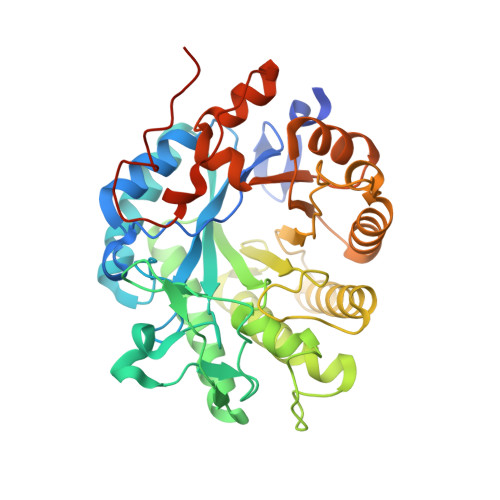Analysis of homodimer formation in 12-oxophytodienoate reductase 3 in solutio and crystallo challenges the physiological role of the dimer.
Kerschbaumer, B., Macheroux, P., Bijelic, A.(2024) Sci Rep 14: 18093-18093
- PubMed: 39103552
- DOI: https://doi.org/10.1038/s41598-024-69160-6
- Primary Citation of Related Structures:
8QN1, 8QN9, 8S8V, 8S8Y, 9EM0, 9EM2, 9EM3, 9EM4, 9EM5, 9EM6 - PubMed Abstract:
12-oxophytodienoate reductase 3 (OPR3) is a key enzyme in the biosynthesis of jasmonoyl-L-isoleucine, the receptor-active form of jasmonic acid and crucial signaling molecule in plant defense. OPR3 was initially crystallized as a self-inhibitory dimer, implying that homodimerization regulates enzymatic activity in response to biotic and abiotic stresses. Since a sulfate ion is bound to Y364, mimicking a phosphorylated tyrosine, it was suggested that dimer formation might be controlled by reversible phosphorylation of Y364 in vivo. To investigate OPR3 homodimerization and its potential physiological role in more detail, we performed analytical gel filtration and dynamic light scattering on wild-type OPR3 and three variants (R283D, R283E, and Y364P). The experiments revealed a rapid and highly sensitive monomer-dimer equilibrium for all OPR3 constructs. We crystallized all constructs with and without sulfate to examine its effect on the dimerization process and whether reversible phosphorylation of Y364 triggers homodimerization in vivo. All OPR3 constructs crystallized in their monomeric and dimeric forms independent of the presence of sulfate. Even variant Y364P, lacking the putative phosphorylation site, was crystallized as a self-inhibitory homodimer, indicating that Y364 is not required for dimerization. Generally, the homodimer is relatively weak, and our results raise doubts about its physiological role in regulating jasmonate biosynthesis.
- Institute of Biochemistry, Graz University of Technology, Petersgasse 12/II, 8010, Graz, Austria.
Organizational Affiliation:

















